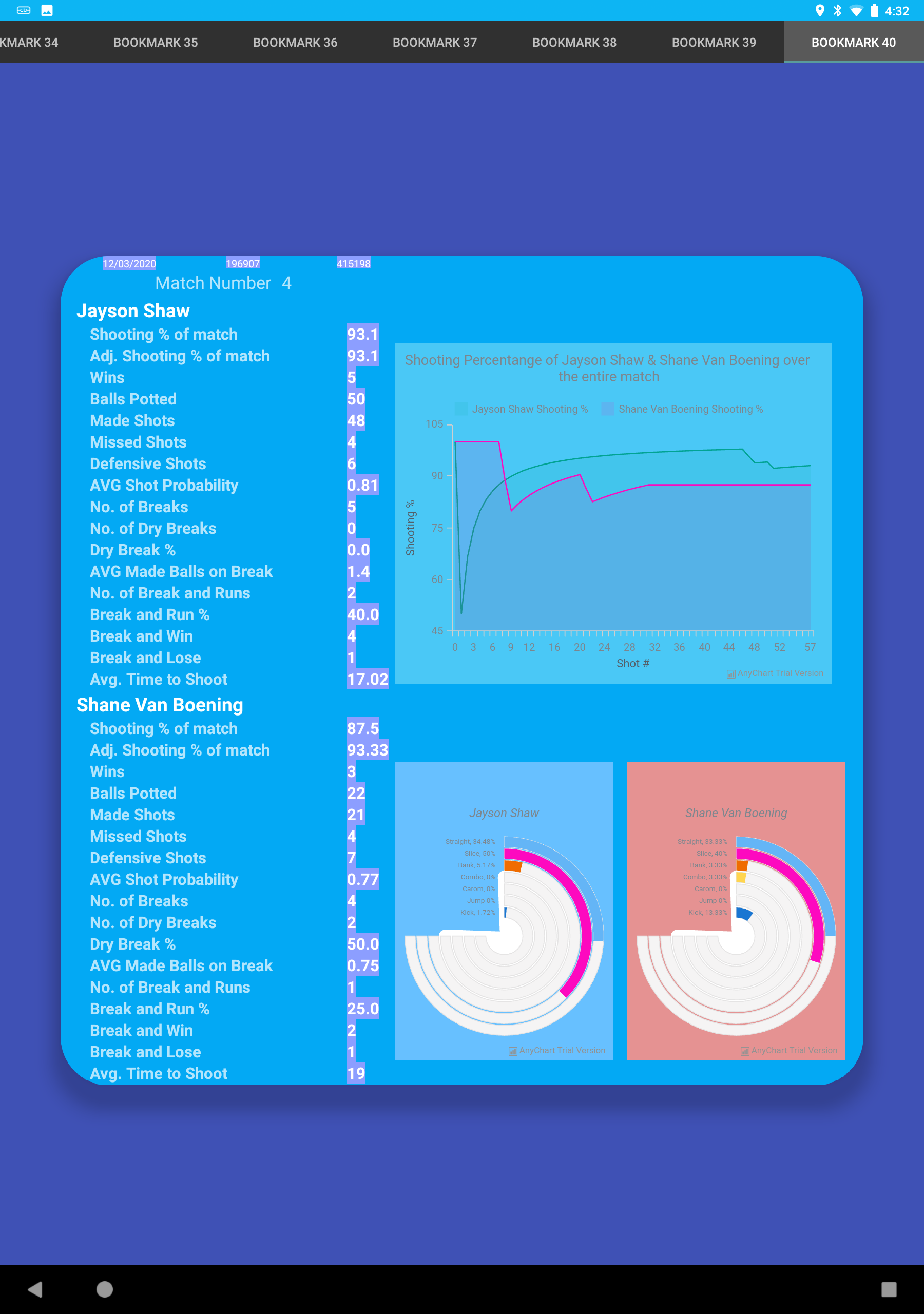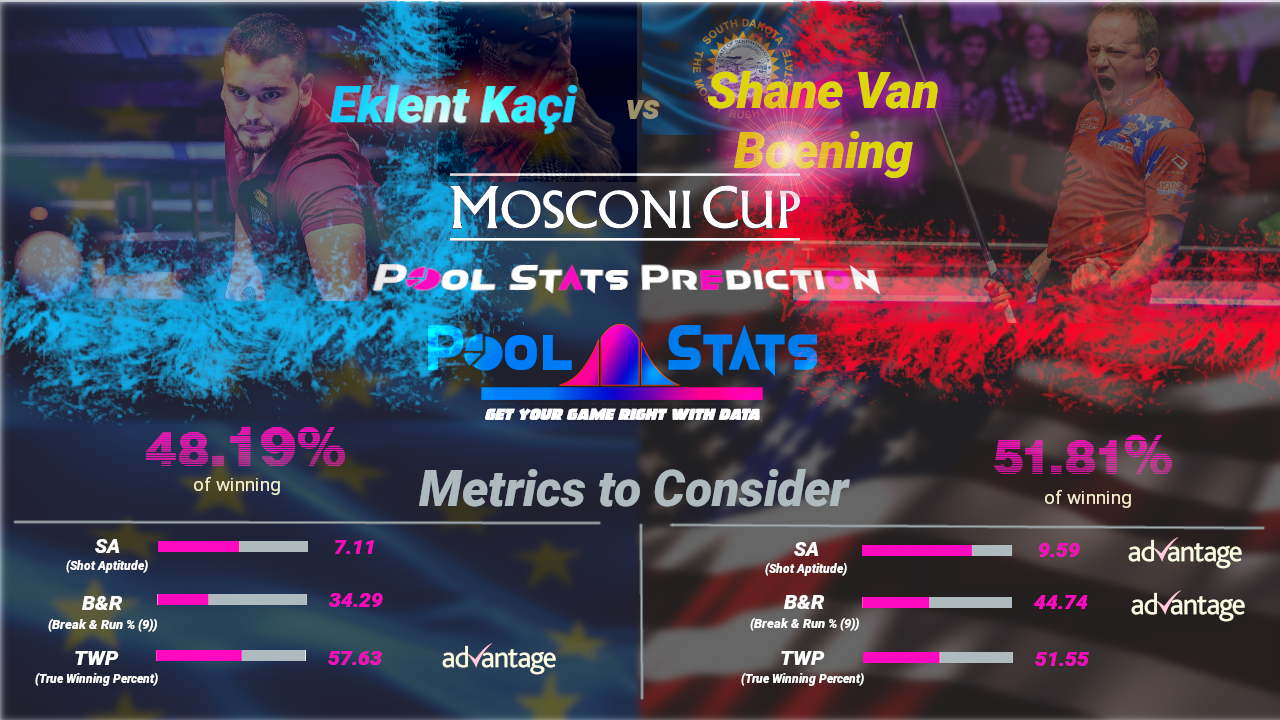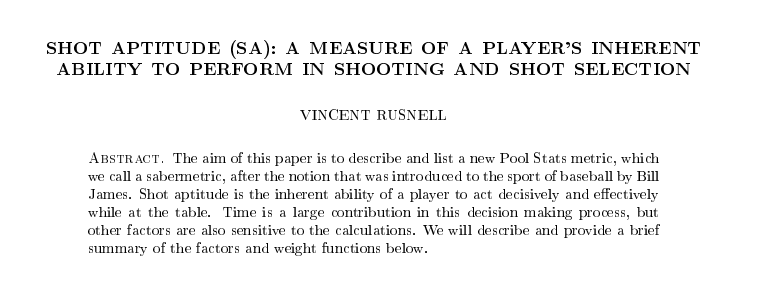
Rack Difficulty Level (RDL): Understanding the complexity of a rack after the break
- December 23, 2020
- Damian
- Analytics, Metabase, Pool Metrics, Pool Stats, Posts, Sabermetrics
- No Comments

It is our pleasure to make an official announcement of a new metric we have devised, through mathematical analysis, called Rack Difficulty Level or RDL. We are always busy here at Pool Stats, creating charts, graphs, gauges, and other data visualizations to comprehend the inner workings of the game of pool. Every so often we go to the chalkboard, or notebook, pencil and calculator, and try to understand the cue sports on a deeper level than what charts and graphs can reveal.
This new metric, though we will use the term, sabermetric, gives a rough understanding of how the pool balls are laid out after a player breaks the rack. The basic factors in computing RDL are how the total number of shots it takes both players to clear the rack, η, and the overall average of shot difficulty (shot probability) throughout the rack, ρ. These two factors are then compared against the continuous global values of the two variables, scaled by the degree of the two continuous variables, and then normalized by a continuously computed averaged factor, μ. In plain terms, the difficutly of the current rack is compared with the overall difficulty of the average rack for 8,9,or 10 ball and scaled to give an appeaing looking number.
It sounds a bit complicated, but the equation is rather simple in it’s form and is an elegent, though not all encompassing, formula for understanding the inherent difficulty of any given rack. RDL can better be viewed as a percentage deviation from the overall average where a negative percent would be the degree of difficulty easier than the average rack (red) and a postive percent would be the degree of difficulty harder than the averagre rack (blue).
So what can this tell me about the game of pool? It may be entertaining to ourselves to know when we win a rack that was signifcantly harder than the overall average rack. Got it. So it’s just for fun. Well…not quite. We can determine whether or not a player, throughout the match, is clawing and fighting their way to victory, by say, winning the easy racks of which the break and run, yet masterfully succeeding in gaining an advantage where the layout of the balls is more inherently difficult and requires strong defense and psychology to win the rack against their opponent.
Over time this metric an highlight how often players win or lose easy or hard racks. This can lead us to knowning how strong a player is realtive to the game of pool itself. It can almost be said that it is a metametric. That is, it describes the game of pool in a metaphysical manner. Or, in clearer terms, the abstractness of the game of pool.
You can view the RDL for all 9-ball games we have recorded thus far here:’
You might also like:-
-

Live Stats Coming Soon
-

Pool Stats Pro v1.6 Released
-

Two Mosconi Cup Match-up Predictions
-

Michigan Leagues Get FREE Access
-

Introducing our Loyalty Program
-

Pool Stats Co-Founder Interviewed on the Podcast Chalk is Cheap
-
Pool Stats Pro v1.2.0
-

On the Quasisubjectivity of Pool Stats Data Collecting
-

Clutch Shooting Percent: Formal White Paper
-

Shot Aptitude White Paper







